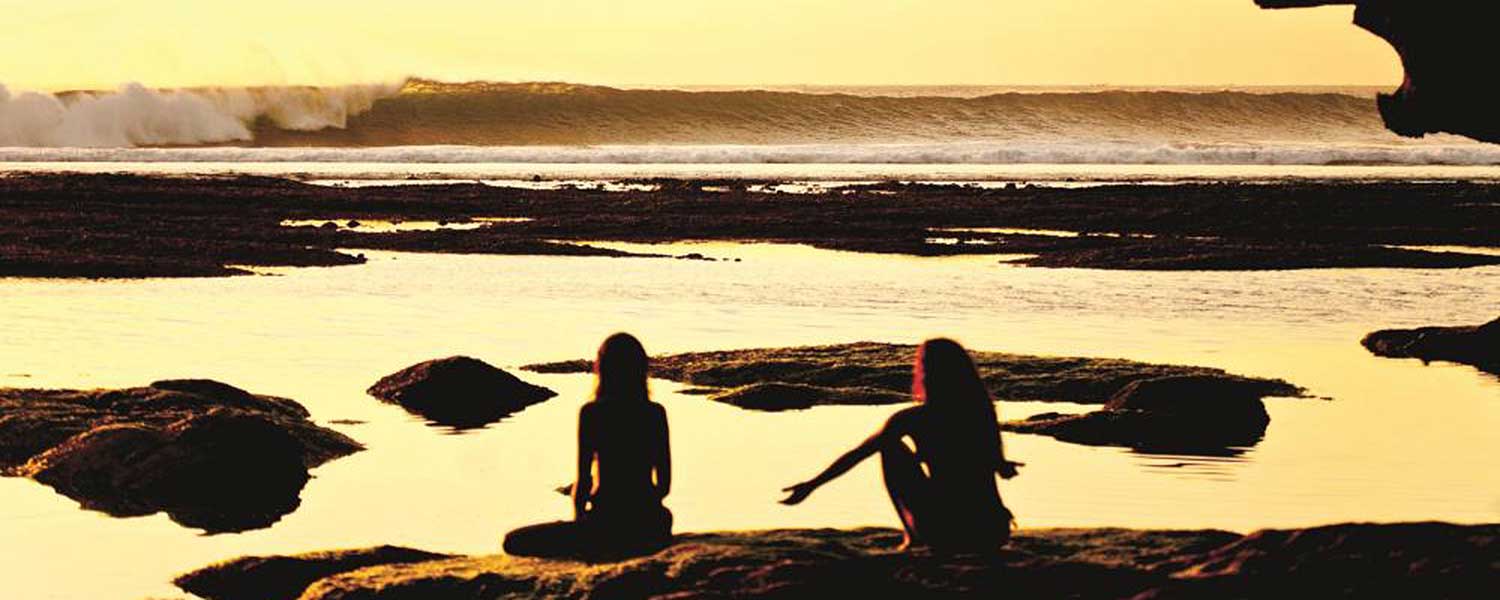
ULUWATU
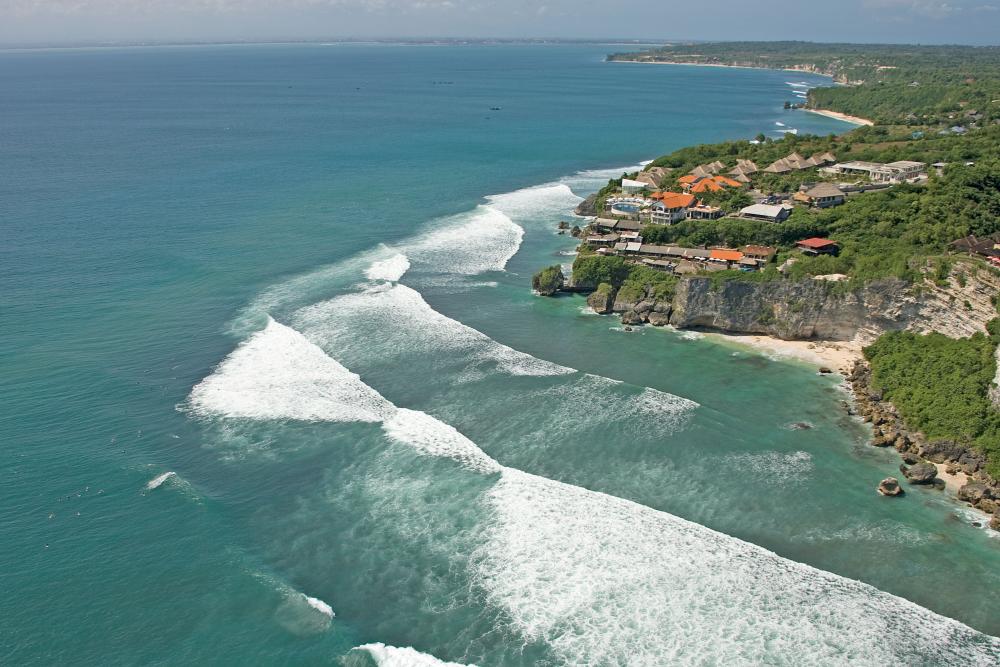
ULUWATU Small high tide Peak, with Padang and Dreamland beyond. Photo thanks Nathan Lawrence
BEST TIME TO TRAVEL:
APRIL THROUGH TO OCTOBER
The first time you see the famous lineup of Uluwatu will be a sight you will remember forever.
Imagine what it was like for young Steve Cooney and Rusty Miller when they first paddled out through the cave in 1971, surfing over coral without legropes!
There are a lot of warungs and shops owned by locals along the cliff face . . . any of these are a great place to enjoy a meal between surfs or watch the sunset over the line up while enjoying a beer . . . You can hang there all day enjoying cheap food, drinks, great views of the surf, and relaxing après-surf massages.
Uluwatu is Bali’s most consistent left.
Almost always 4 foot plus, so it’s almost always crowded too. But because there are several different options over a large area this can spread the crowd out.
You can try and score less crowded early morning sessions by staying at one of the many Villas or Losmens nearby.
At Mid to High tide, you can surf the most popular section known as The Peak, straight out and a little to the left from the Cave, with classic tubes right from the jacking take-off. Unfortunately, one in three tubes tend to close down unpredictably, so be prepared to duck out through the back. Low tide causes the Peak to close out, so then you can surf 100 metres further down the reef there’s a take-off spot some call Inside Corner which can be quite an easy wall to start with until the wave hits the Racetrack section. Where there is a series of super-fast, long walled sections that link together with predictable open tubes that lure you into the next curving bowl. But don’t go too far, because like most Indo reef breaks, it eventually closes out savagely onto almost dry coral that is very sharp. if you have them wear reef boots. The racetrack is best at low tide or 2-3 hours each side of Low
When it gets big 8 – 10 feet at low tide, straight out from the start of Racetrack, there is Outside Corner, a thick pushy wall that rolls evenly for 100 to 200 metres. There are rarely tubes, but the faces are ideal for big carving manoeuvres. A great place to push yourself into tackling bigger surf.
Be careful to time your paddle out at Low tide or you can find yourself getting pounded along the dry inside reef and washed halfway to Padang Padang down the coast
On the biggest swells, the Bombie a big wave cloud break, looms up way out the back. It’s the most exposed reef to the large open ocean swells at Uluwatu.
The Bombie is one of Bali’s premium big wave spots.
Bring your Hawaiian gun and plenty of courage if you’re going to take it on . . . otherwise sit back and enjoy the spectacle from the comfort of the cliff. For experienced big wave surfers only.
Temples is the line-up you can see furthest south, take off is closer to the cliff face on the left and it peels off nicely for around 80 metres before finishing just inside the Peak. A good reef to find some juice and barrels on smaller days. When surfing Temples to save a few hundred metres of paddling, walk along the beach as far south as possible before paddling out. Or be like Gerry Lopez and stay at “Uluwatu Surf Villas” on the cliff overlooking the least crowded sections of reef.
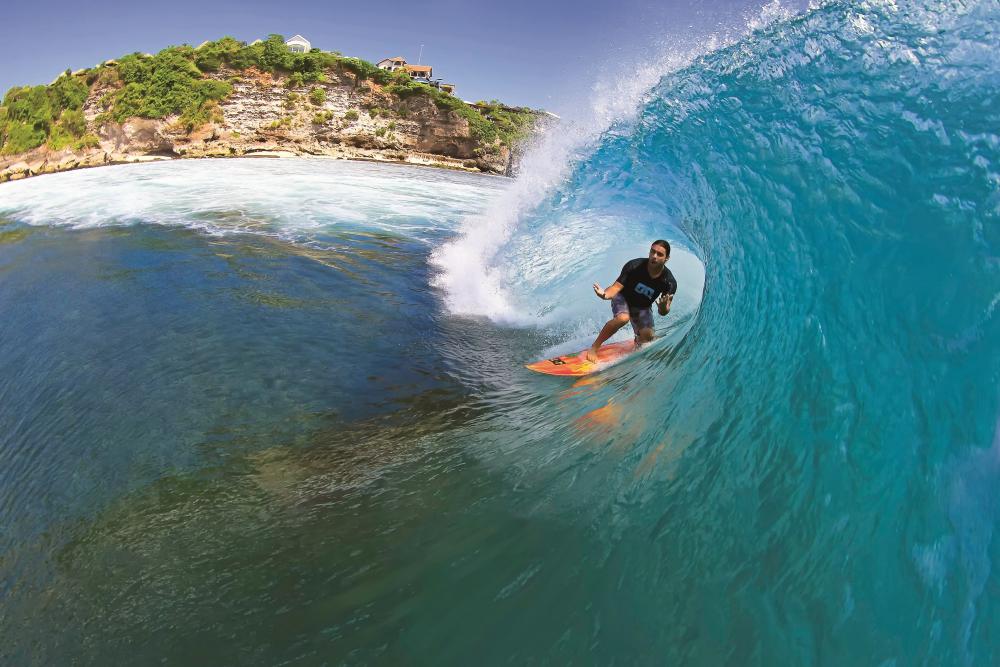
Racetrack Uluwatu Low Tide Racetrack. Photo thanks Trevor Murphy
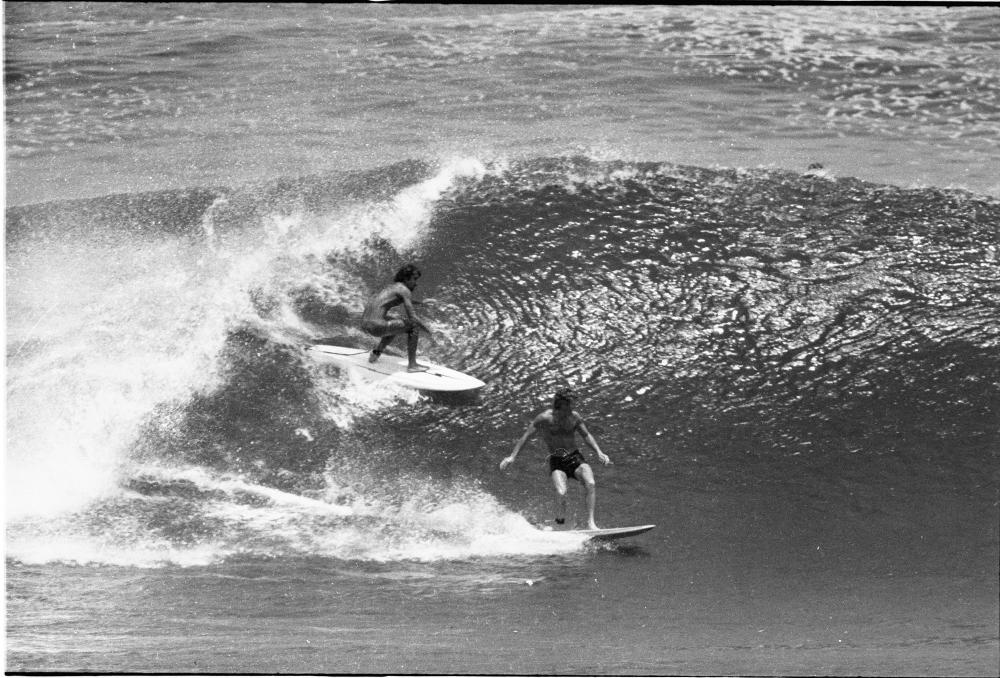
High Tide Peak with surfing legends Gerry Lopez and Terry Fitzgerald, cross-over fun at Uluwatu in 1973. Photo thanks Dick Hoole
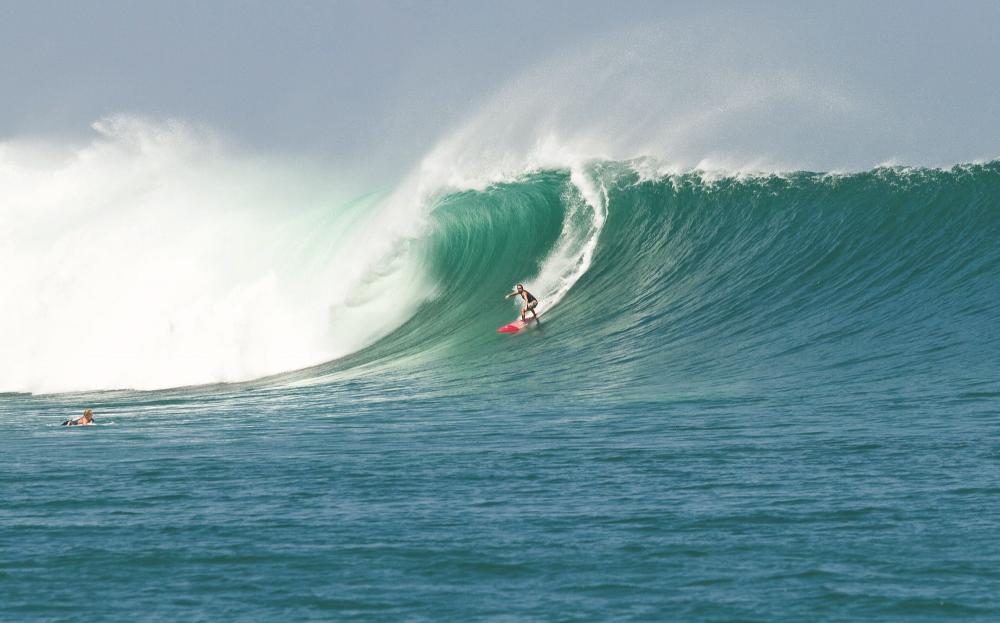
Outside Corner Drifter’s Jake McKenzie, Outside Corner on the best day of the year. Photo thanks Shane Dawson
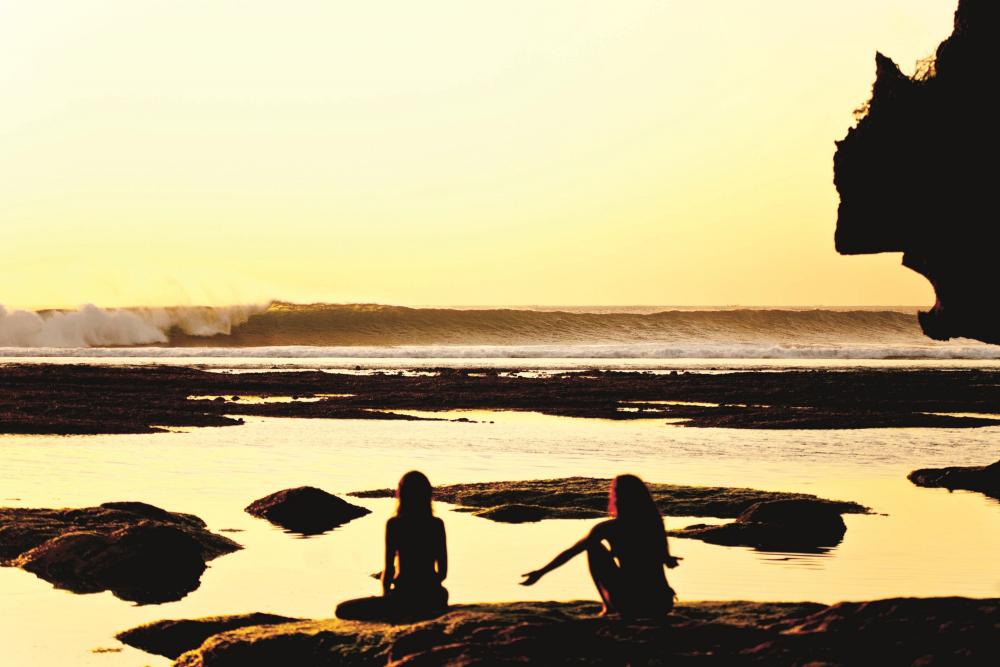
Low Tide Uluwatu Cave. The only way into and out of the surf, with no channel. Low tide Racetrack peeling off. Photo thanks John S Callahan
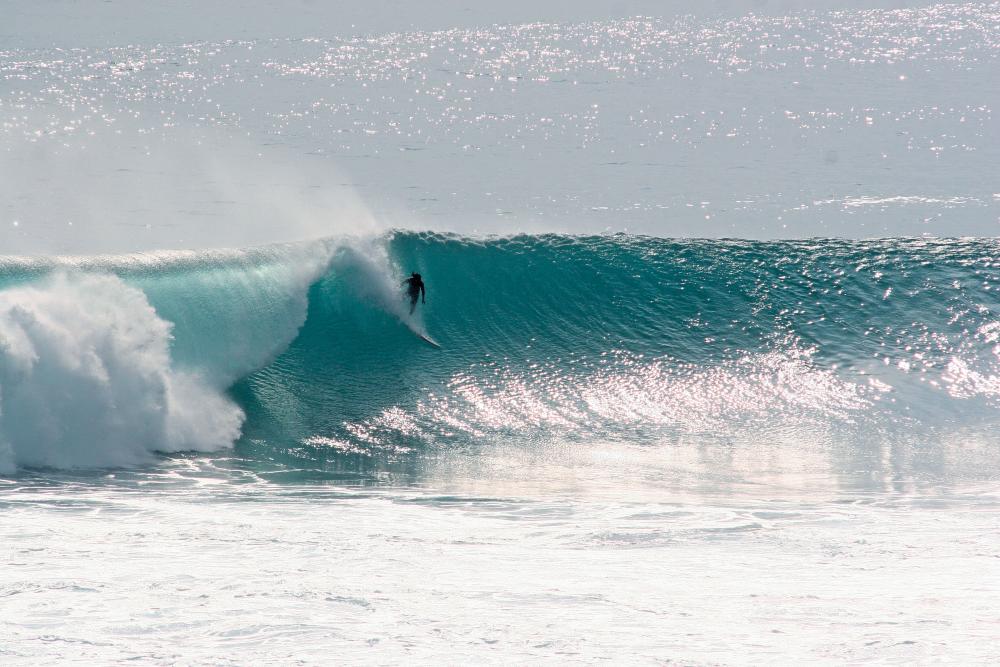
Ulu local Made Lana, relaxed at Outside Corner. Many claim he is the best backhand surfer in the world. Photo thanks Jon Huberman
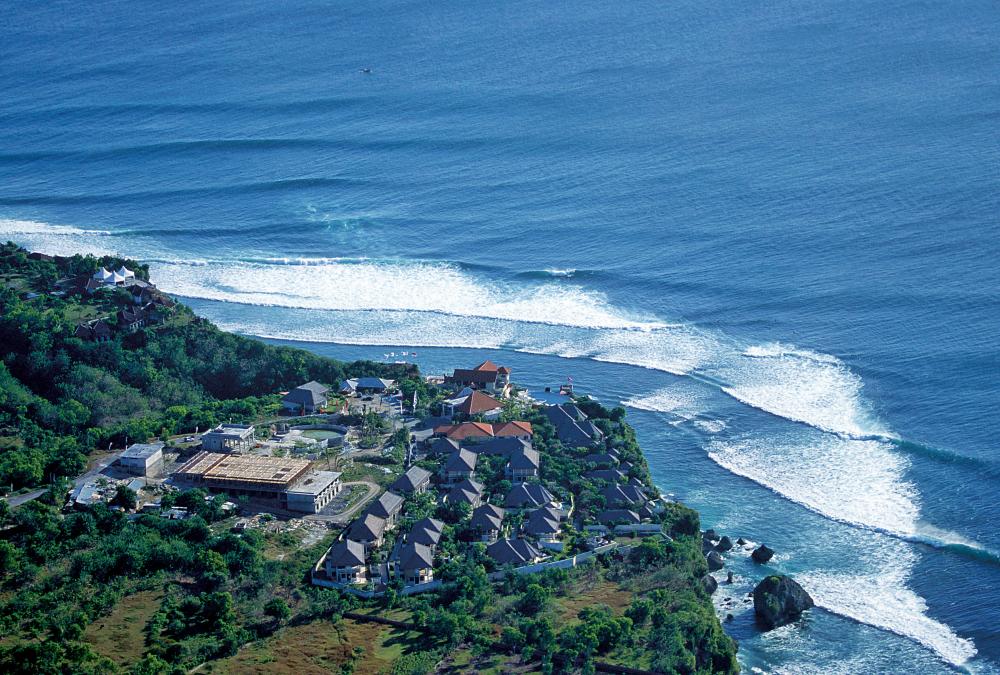
Uluwatu overview. Blue Point Villas on the clifftop. Photo thanks JS Callahan / tropicalpix

Outside Corner as big as it gets, May 2007. Aussie lifeguard Sean Woolnough. Photo thanks Kadek Uluwatuphoto
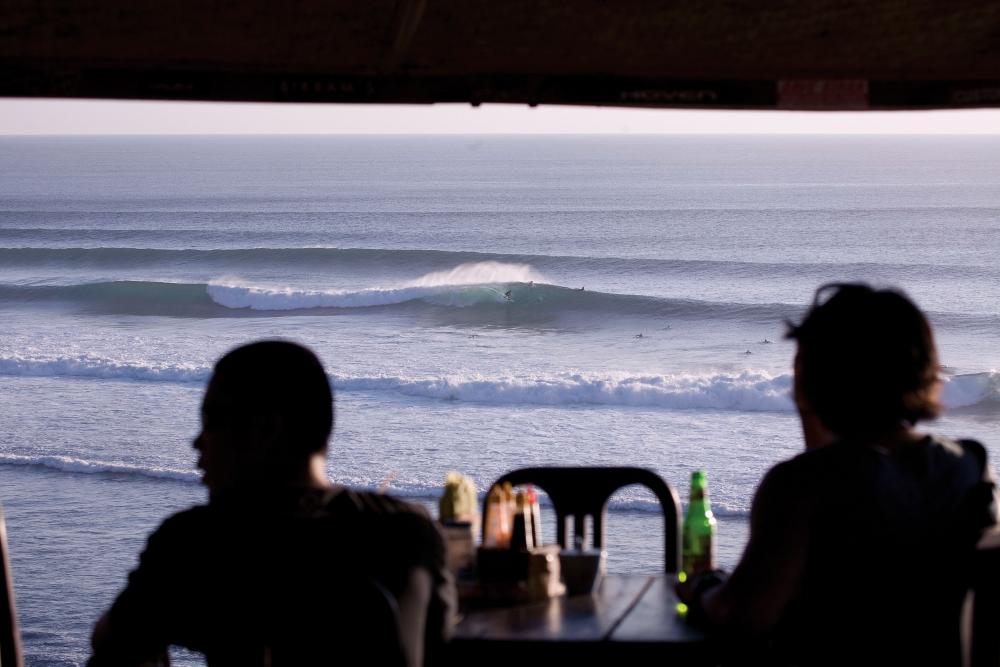
The Peak at High Tide, an always entertaining view. Photo thanks Emiliano Cataldi
